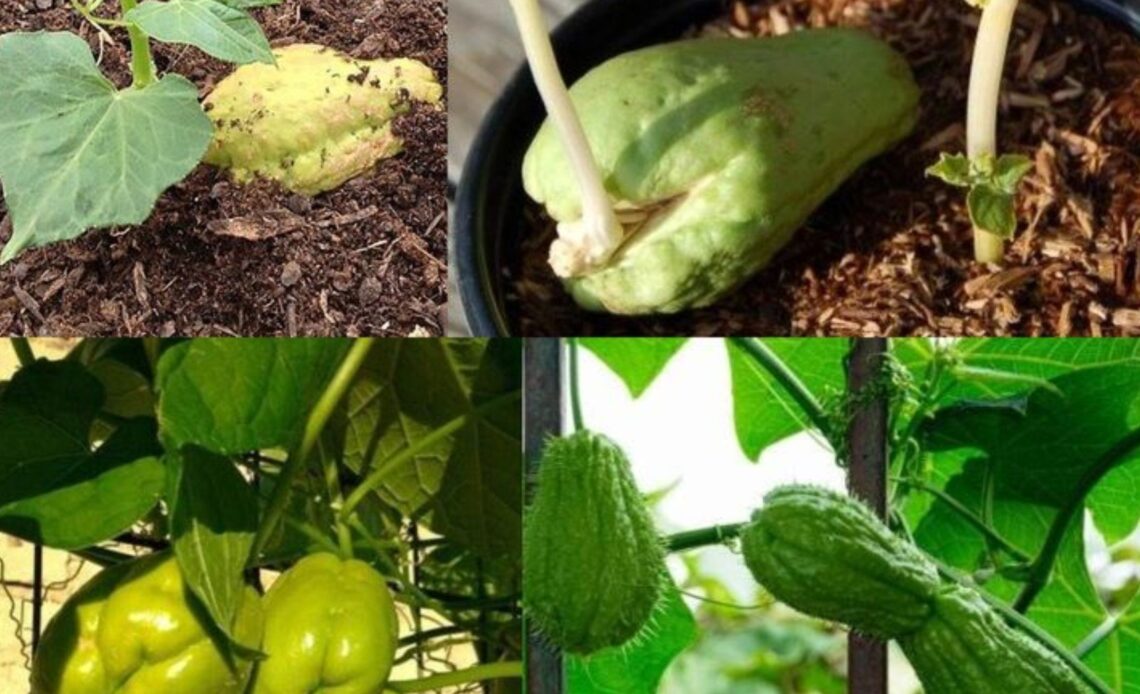Growing chayote in containers is an excellent way to cultivate this versatile vegetable, even if you have limited gardening space. Whether you live in an apartment, have a small backyard, or simply want to control growing conditions more effectively, container gardening offers a practical solution. However, successfully growing chayote in pots requires specific techniques to ensure healthy vines and a bountiful harvest.
Below, we reveal four essential secrets to mastering chayote container gardening. Follow these steps, and you’ll be harvesting homegrown chayote in no time
## 1. Choose the Perfect Container for Maximum Growth
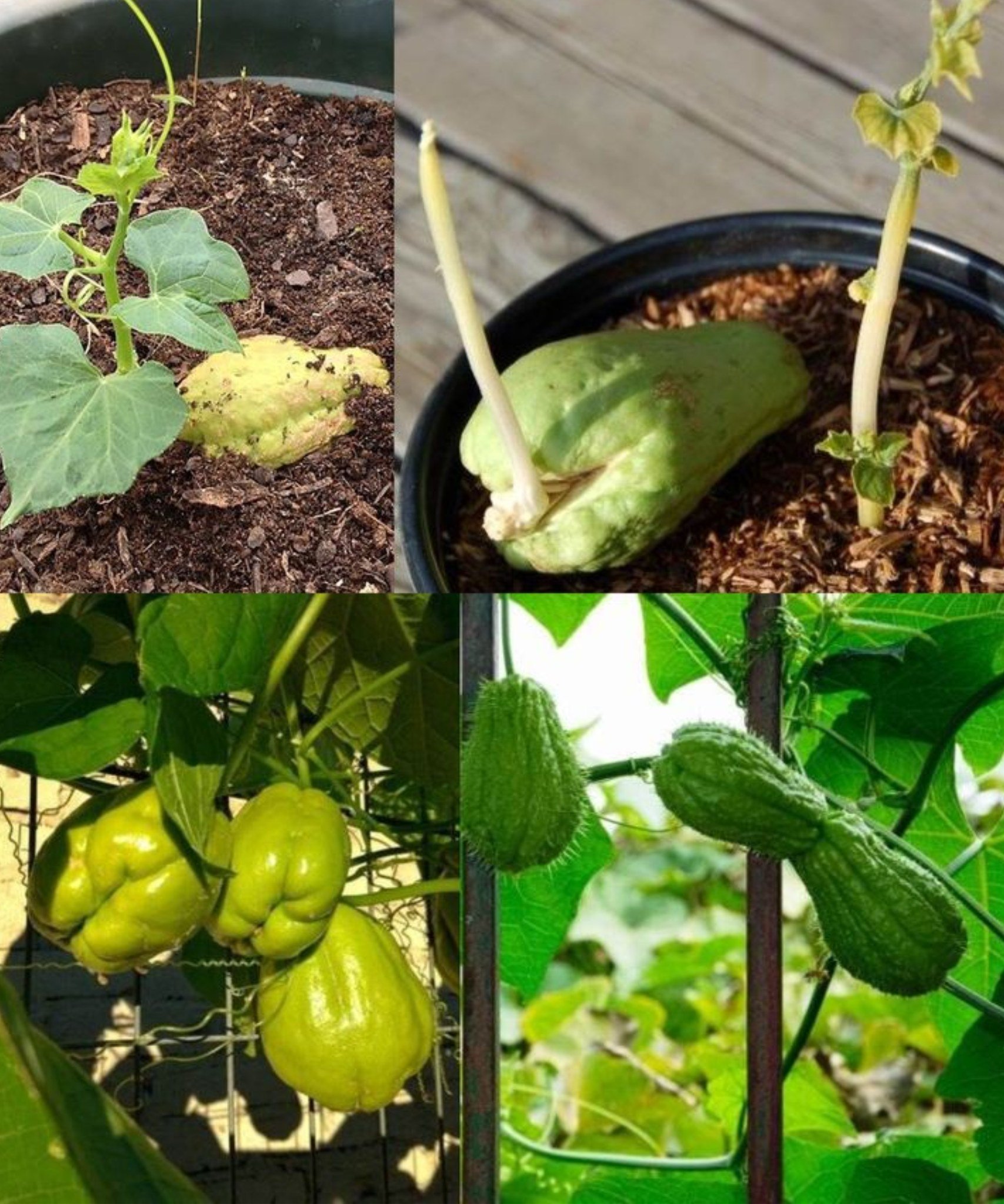
One of the most critical factors in growing chayote successfully in containers is selecting the right type of pot. Since chayote is a fast-growing, sprawling vine with an extensive root system, the container must provide enough space for root expansion and plant stability.
### **Ideal Container Size**
– A container with a depth of at least **12 inches (30 cm)** and a width of **18 inches (45 cm)** is recommended.
– The larger the container, the better the roots can develop, leading to a more productive plant.
### **Drainage is Key**
– Ensure the container has **sufficient drainage holes** to prevent water from accumulating, which can cause root rot.
– If using a plastic or wooden container, drill extra holes if needed to improve drainage.
### **Material Considerations**
– **Plastic pots** retain moisture better but may heat up quickly in the sun.
– **Terracotta or clay pots** provide better airflow to the roots but dry out faster.
– **Grow bags** are an excellent option as they allow air pruning of roots, preventing overcrowding.
By choosing the correct container, you create a strong foundation for healthy chayote growth.
## 2. Prepare the Ideal Soil Mix for Maximum Nutrient Absorption
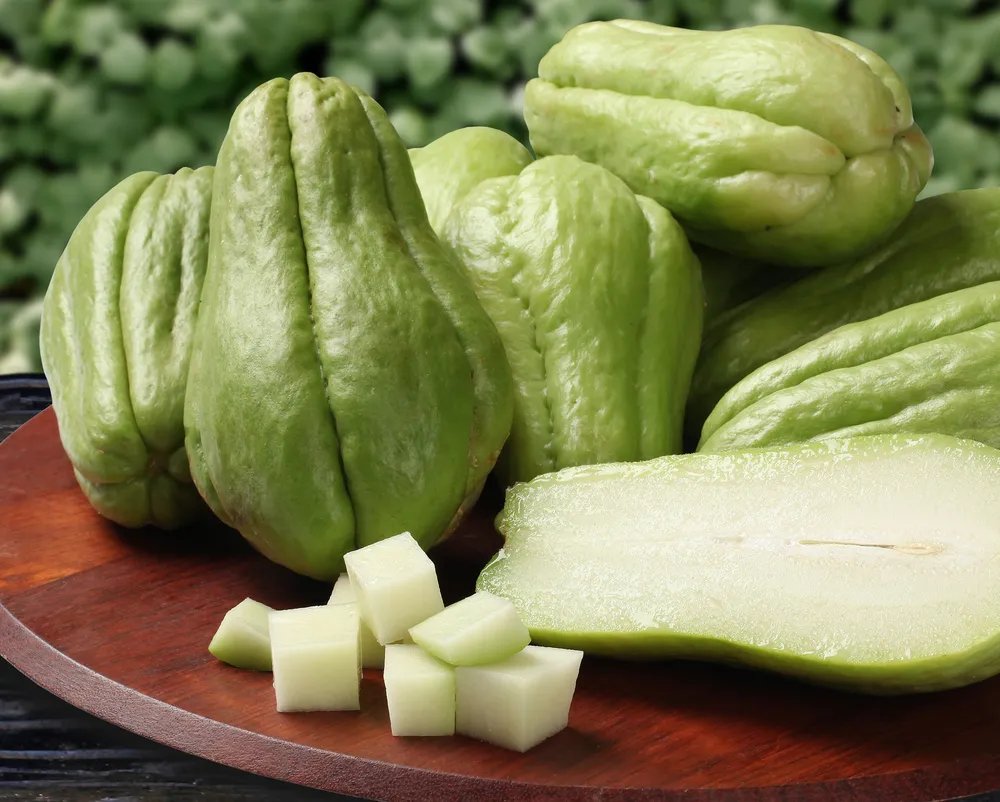
Chayote thrives in rich, well-draining soil with the right balance of nutrients and moisture retention. The soil mix you use in your container can make a significant difference in plant health and fruit production.
### **The Perfect Soil Composition**
– Use a mix of **peat moss, compost, and perlite** to create well-draining yet nutrient-rich soil.
– A good ratio to follow is **50% garden soil, 30% compost, and 20% perlite or sand** to improve aeration.
### **Adjusting Soil pH**
– Chayote prefers slightly acidic to neutral soil, with an **optimal pH range of 6.0 to 7.0**.
– To lower pH, add organic matter like peat moss.
– To increase pH, incorporate crushed eggshells or agricultural lime.
### **Enriching the Soil for Healthy Growth**
– Mix in **organic compost** or **well-rotted manure** before planting to provide essential nutrients.
– Adding a layer of **mulch** on top of the soil helps retain moisture and regulate temperature.
Providing the right soil conditions ensures that your chayote plant receives the nutrients it needs to flourish.
## 3. Provide Optimal Growing Conditions – The Secret to Bigger Yields
Many gardeners struggle to grow chayote because they overlook the environmental factors that directly impact plant health. By replicating its natural habitat as closely as possible, you can ensure robust growth and abundant fruit production.
### **Light Requirements**
– Chayote plants require **at least 6 to 8 hours of direct sunlight per day** for vigorous growth.
– If growing indoors or in a shaded area, consider **supplementing with grow lights**.
### **Temperature and Climate Considerations**
– Chayote thrives in **warm temperatures** between **65°F and 85°F (18°C to 29°C)**.
– If temperatures drop below **50°F (10°C)**, protect the plant with a greenhouse cover or bring the container indoors.
– Avoid exposing chayote to strong winds, as the vines can be fragile.
### **Using a Support System**
Since chayote is a vining plant, **providing a sturdy trellis or stake** is essential for supporting its growth.
– Use a **vertical trellis**, **bamboo poles**, or a **wire fence** to guide the vines upward.
– This prevents the plant from sprawling on the ground and **reduces disease risks** by improving air circulation.
By optimizing light, temperature, and support structures, you’ll significantly improve the growth and yield of your chayote plant.
## 4. Master the Art of Watering and Fertilization
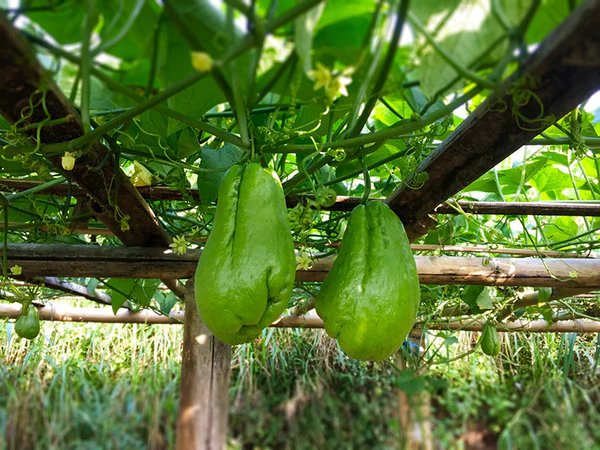
Watering and feeding your chayote plant correctly is crucial for strong root development and fruit production. Improper watering or nutrient deficiencies can lead to weak growth or failed fruiting.
### **How to Water Chayote Properly**
– Keep the soil **consistently moist but not soggy**.
– **Check soil moisture** by inserting your finger 1–2 inches into the soil. If it feels dry, it’s time to water.
– **Water thoroughly** until you see excess water draining out of the pot to ensure deep root hydration.
### **Best Fertilizers for Chayote**
– Use a **balanced fertilizer** (such as **10-10-10 or 14-14-14**) every 4–6 weeks during the growing season.
– **Organic options** like compost tea, banana peel water, or fish emulsion can also enhance nutrient availability.
– **Boost flowering and fruiting** by adding phosphorus-rich fertilizers once the plant starts producing vines.
### **Common Watering Mistakes to Avoid**
– **Overwatering** leads to **root rot** and fungal diseases.
– **Underwatering** causes **stunted growth** and **fruit drop**.
– **Watering during peak sunlight hours** can result in evaporation loss—**water early in the morning or late in the afternoon**.
Proper hydration and feeding will ensure your chayote grows vigorously and produces high-quality fruit.
## **Final Thoughts – Your Chayote Success Starts Now**
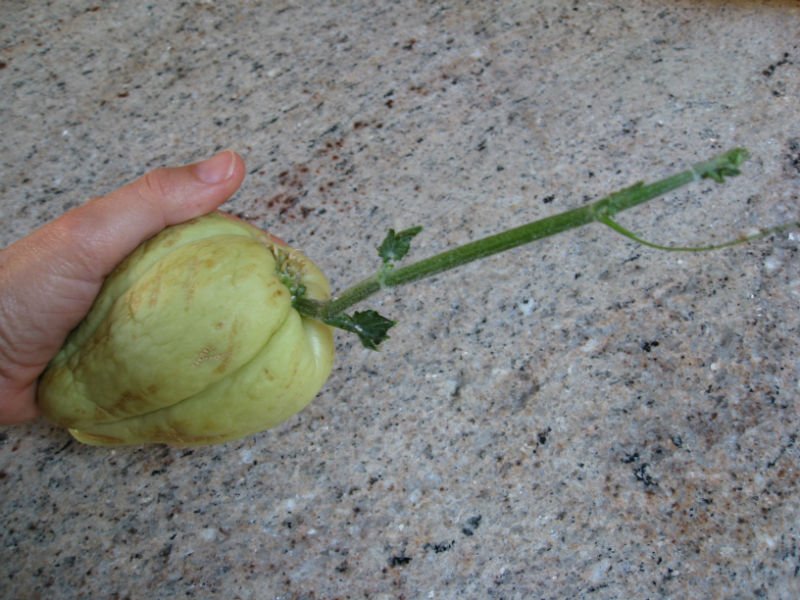
Growing chayote in containers is a fantastic way to enjoy fresh, homegrown produce, even in limited spaces. By choosing the right container, preparing nutrient-rich soil, providing optimal growth conditions, and mastering watering and fertilization techniques, you can achieve impressive results.
Whether you’re a beginner or an experienced gardener, these **four hidden secrets** will give you the knowledge you need to grow **healthy and productive chayote plants**. Start today, and enjoy the satisfaction of harvesting your very own homegrown chayote
